IN SEARCH OF POSITIVE ANOMALIES:
some current thoughts on Johannesburg
The two biggest industries in Johannesburg are gold and fashion. Both are visually stimulating, both shamelessly promise you that your dreams will come true, both encourage ego, vanity and the lust for power, and both rely on high labour turnover in which human beings are disposable. Not happy with the way you’re treated? Move along my friend, thousands behind you are ready to replace you. Emerging from this dynamic are Johannesburg’s two second-biggest industries: immigration and struggle.
Sure, many other urban centres can boast of multiculturalism and diversity, but this must certainly be the ultimate immigrant city: that is its essential, if not only, identity. In this megacity that grew out of a mining compound, everyone has a migration story to tell, whether their origins are from elsewhere in South Africa, the continent or beyond. And though Johannesburg, with its townships like Soweto, became world-famous as the epicentre of the struggle against apartheid, the workers’ struggle here goes back to the city’s very genesis, when brutalized striking miners were forced back underground at gunpoint. Perhaps it’s this ruthless undercurrent in Johannesburg’s history that makes its people so religiously attached to their friends. It takes time and effort to discern who your friends are here. That person smiling at you and giving you a big hug might murder you, or more realistically might stop replying to your messages and bluetick you eternally. But if they don’t, you might have a brother or sister for life.
Johannesburg, Joburg, Jozi… This is the city you’ve been warned about and advised to avoid, the city developed by psychopaths obsessed with segregation and that still has the world’s most insane income inequality. A brutalist metropolis deliberately designed to intimidate and humiliate; a city no one ever loved – even those who built it. No one ever wrote songs or poems for Johannesburg, or came here on holiday just to wander and explore. It was always a place to look for money. Even the name… who the hell was Johannes? There were three or four bureaucrats with that name when the gold was discovered. The place needed to be called something, and one of them filled out a form… Can a story possibly be more prosaic? Yet, a by-product of this love deficiency is one of the city’s most attractive features for entrepreneurs: its potential to be a blank canvass for fantasies, like early Hollywood: come and do anything, build anything, live your dream. This isn’t Paris or Jerusalem where a permit to paint your door a different colour can take 20 years. Johannesburg has always attracted people with ambitions of making history.
In geology, the term “positive anomaly” refers to an unusually increased abundance of a mineral. Major gold concentrations around the world might contain a thousand, two or perhaps five thousand tonnes. The Johannesburg area contains around 70 thousand: a scientific phenomenon that geologists cannot explain. There’s more gold here than in every other location combined, perhaps over 80% of all the gold on earth. Plus other minerals in equally insane quantities. In scientific terms, this is the largest positive anomaly on planet earth.
Johannesburg is also a positive anomaly in other ways. Logically there shouldn’t even be a metropolis here. Cities are built on rivers and coastlines; nowhere else in the world is there one this huge built on a mining compound. And though people talk about the hustle and the crime here, what stands out more is the acceptance of difference, the spiritual sense of curiosity towards other people: that unspoken, even unconscious awareness that any stranger you randomly meet might be the person who is meant to change your life. Obviously, we must expect some resentment and animosity, but that isn’t the prevailing dynamic. And though you do sometimes feel that you’re living on the edge here, crime is no longer the dominant conversation, as a surge of innovative solutions and entrepreneurship takes centre stage.
Yes, this city used to intimidate the hell out of me. I was leading a rather nomadic life, having left Australia, where I grew up, to explore opportunities around Africa. Joburg was unlike other African cities I knew, with their all-night street action, music venues and markets. Here it was high walls, electric fences and be-home-before-dark vibes. Not a lifestyle that inspired me. I still kept coming back for various reasons, always reluctantly, until one day, unexpectedly, I realized that I feel at home here. Johannesburg has been changing faster than any other city I know. People are out in the streets again, showing off their skills and talents, checking out what others do and taking endless selfies. The inner-city concrete rooftops are being transformed with vegetable gardens and meditation. Anyone can find spirituality atop a secluded mountain or on a serene riverbank, right? But a sense of peace amidst this pandemonium, now that’s a positive anomaly! Johannesburg is experiencing a golden age of music, art, fashion, urban renewal and overall creativity, informed by its history and heritage, but unattached to it, understanding that everything must be done entirely differently. Finally, Johannesburg is celebrating its own poetry.
But now this pandemic, with its lockdowns and enforced isolation… I happened to be in Sydney in March when all the borders were closed. I am back in the city where I grew up and it feels strangely like exile.
On the southwestern fringe of Johannesburg, where some of the world’s largest active gold mines are located, is a dusty, bleak township called Khutsong. Spartan, temporary-looking houses sit amidst massive mine dumps that from afar resemble yellow mountains. If you grow up here your only employment options are in mining or retail. Here Johannesburg’s origins begin to make sense. Today’s inner city was once just like this. I write these thoughts about Johannesburg not to sanitize or sugarcoat it. I write them because this is a city where you can stare straight in the eye of this planet’s merciless contradiction, and emerge invigorated.
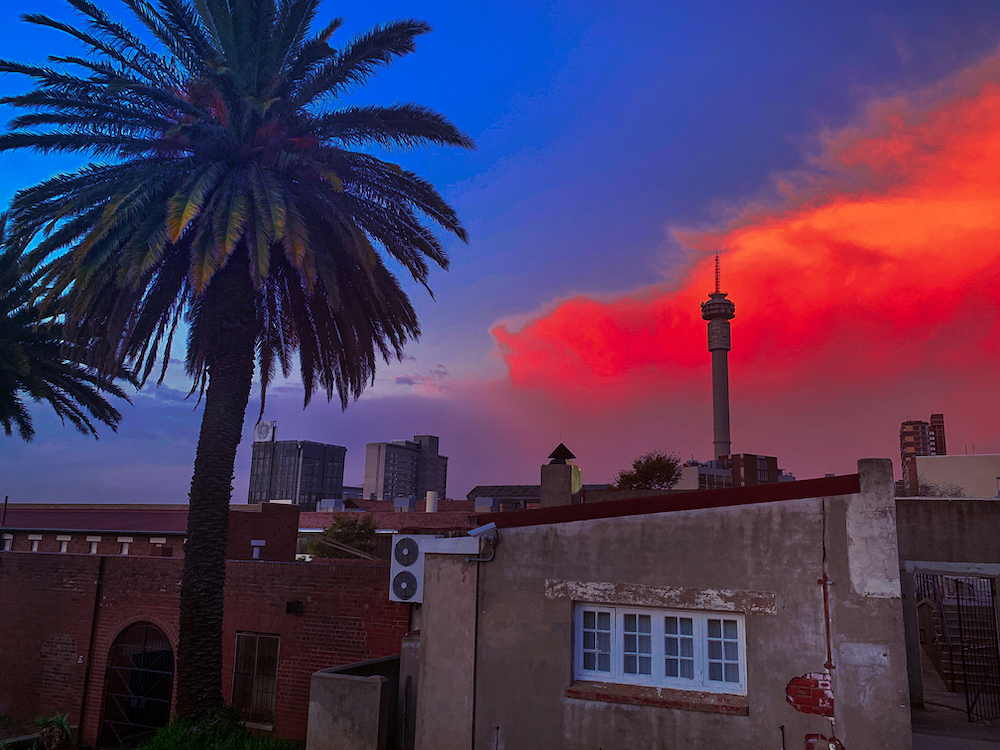
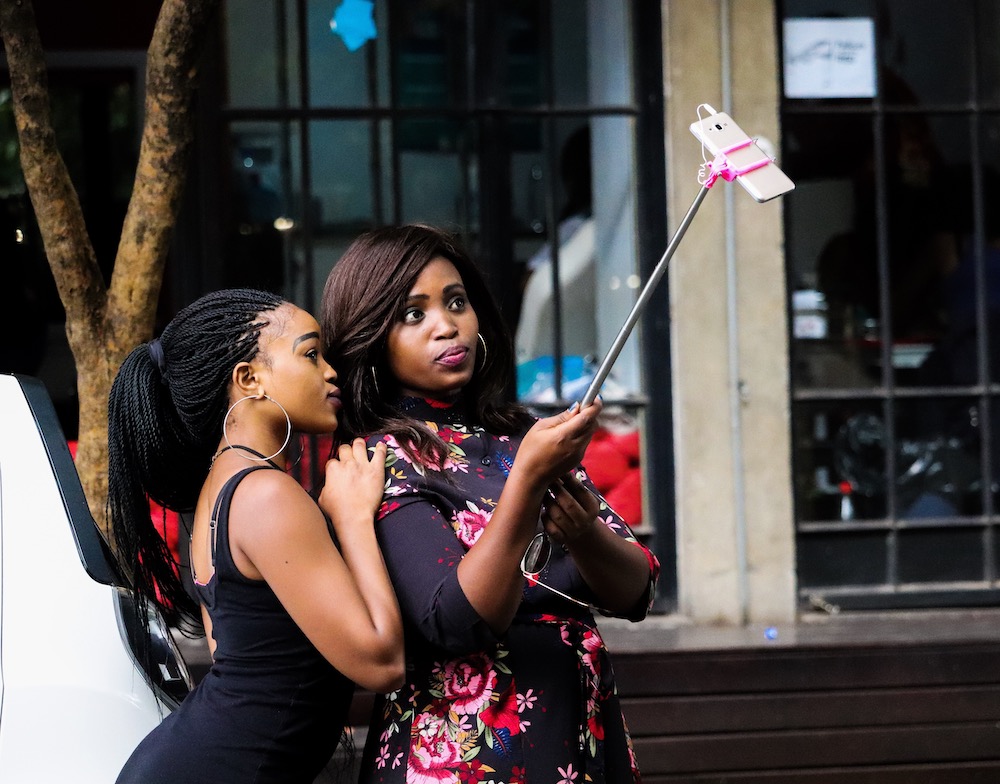
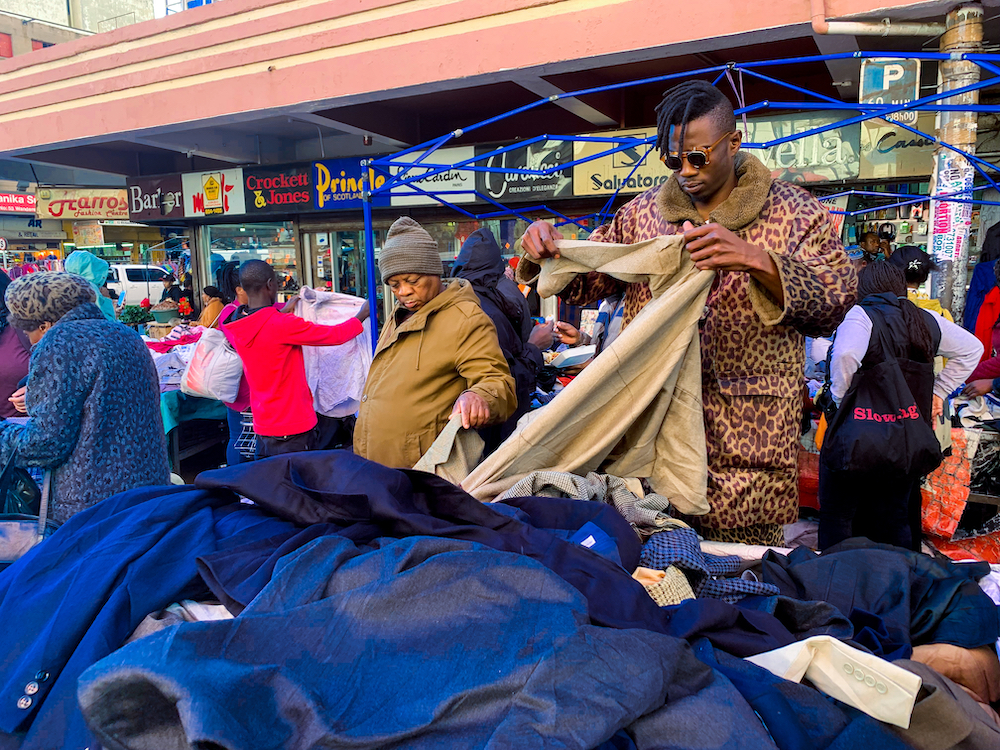
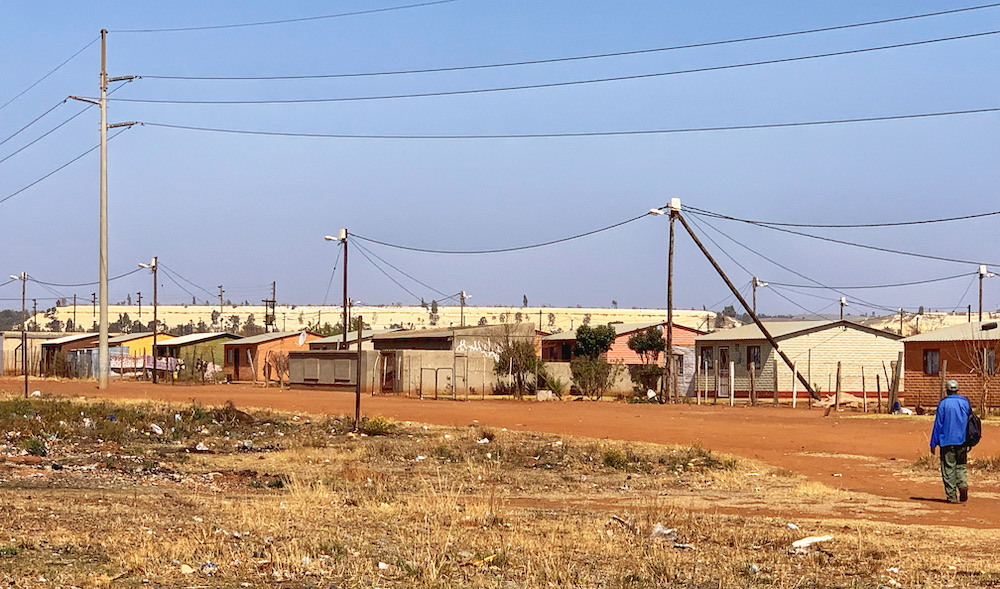
Images by Eugene Ulman
- Constitution Hill: originally built as a prison in 1896 (both Mahatma Gandhi and Nelson Mandela spent time here). It is now the home of the Constitutional Court and a symbol of South Africa’s determination to reinvent itself.
- Street life in Maboneng, inner-city Johannesburg
- Thrifting in the mayhem of downtown Johannesburg with L.J. The Stylist
- Spartan homes sit amidst mine dumps in the township of Khutsong on the outskirts of Johannesburg, the epicentre of gold mining in the area today.
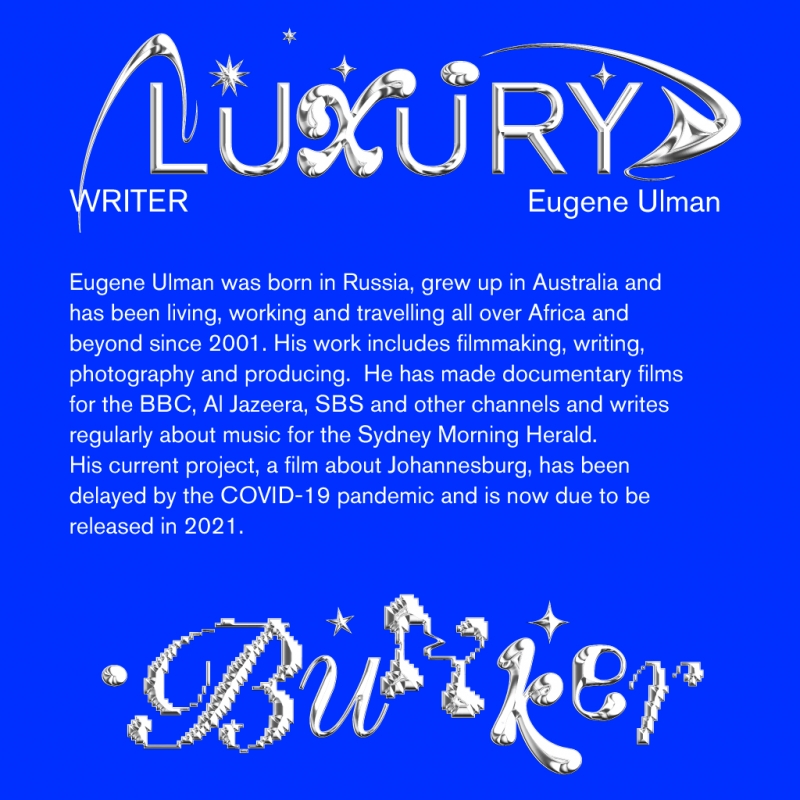
Luxury Bunker is a series of texts presented by Contemporary Art Tasmania’s online platform for writing, Journal.
Traditionally Journal provides an opportunity for writers to respond to our gallery exhibitions. Due to the COVID -19 gallery closure we are expanding the scope of Journal and commissioning an international selection of writers to respond their space, place, city… their bunker.
